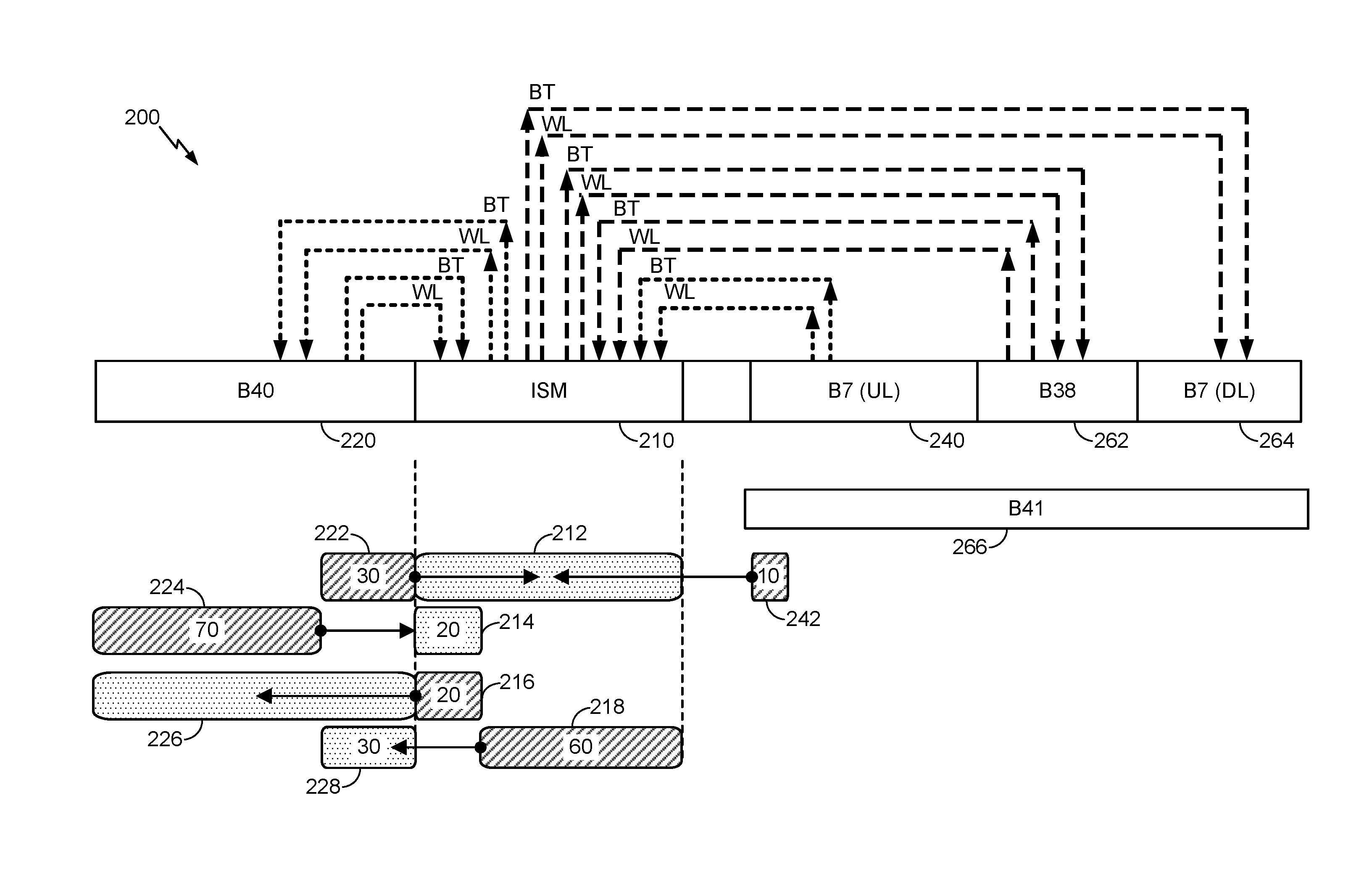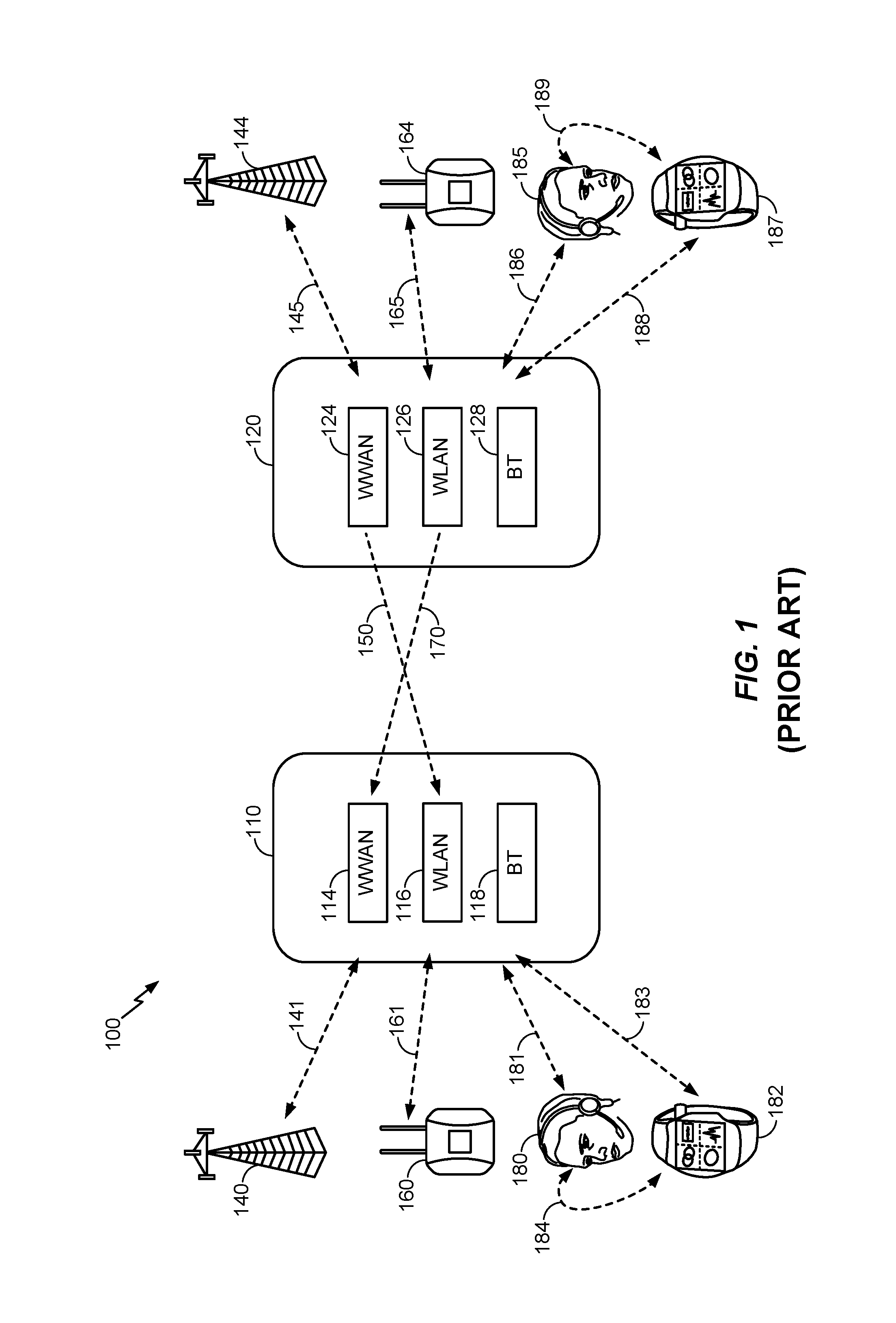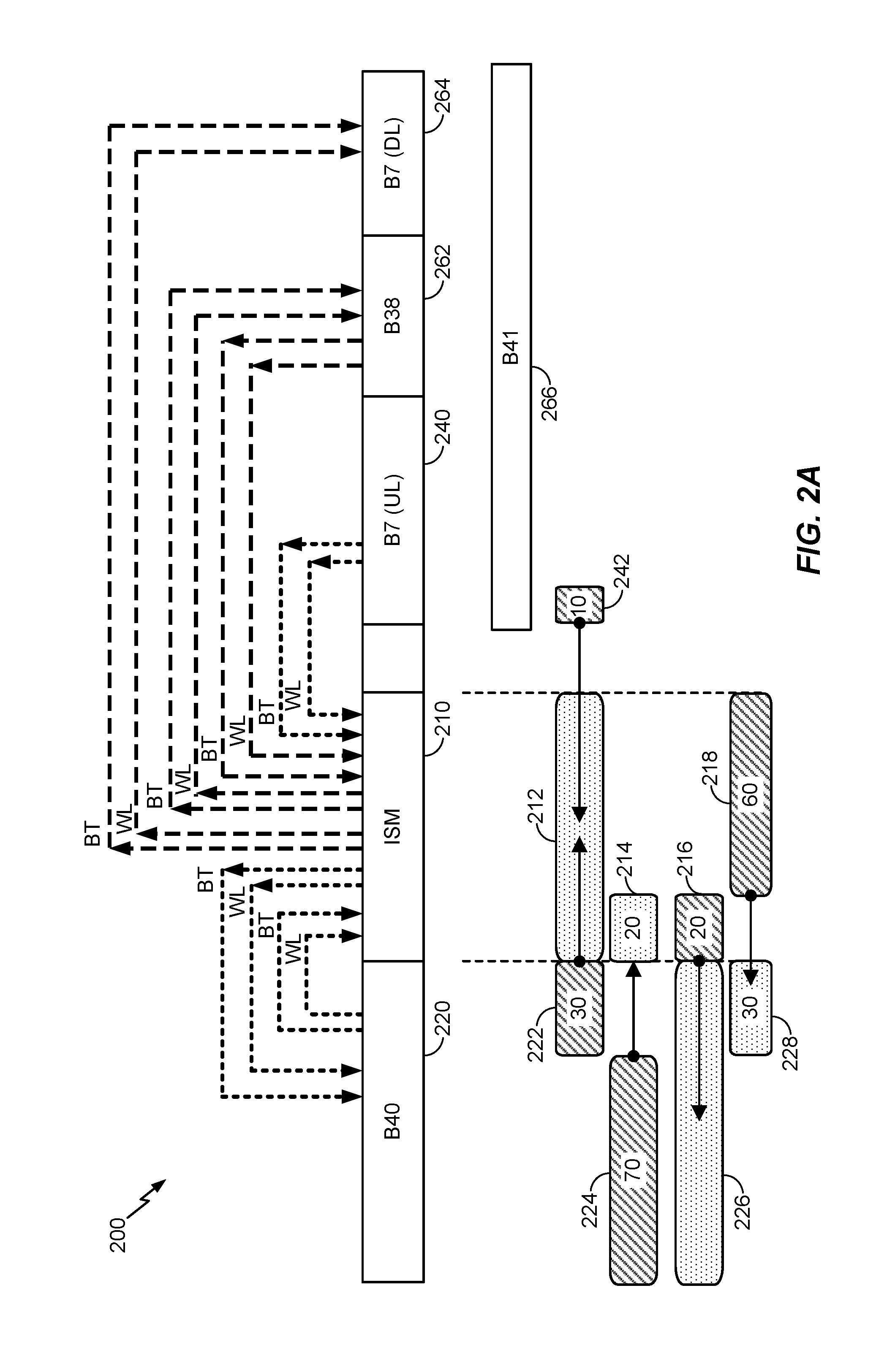Coexistence among wireless devices using peer-to-peer signaling
- Summary
- Abstract
- Description
- Claims
- Application Information
AI Technical Summary
Benefits of technology
Problems solved by technology
Method used
Image
Examples
Embodiment Construction
[0036]FIG. 1 generally illustrates an example of a coexistence issue that may arise in a wireless environment 100 when wireless devices are in proximity to one another. The wireless environment 100 may comprise a communication medium through which wireless communication links can be established. A first wireless device 110 includes multiple radios, each radio operating in accordance with a different radio access technology (RAT). The first wireless device 110 includes a first wireless wide area network (WWAN) radio 114, a first wireless local area network (WLAN) radio 116, and a first Bluetooth radio 118. The first wireless device 110 can use the radios 114, 116, 118 to communicate within the wireless environment 100. For example, as depicted in FIG. 1, the first wireless device 110 can wirelessly communicate with a base station 140 over a WWAN link 141 using the WWAN radio 114. The first wireless device 110 can also wirelessly communicate with an access point 160 over a WLAN link 1...
PUM
 Login to View More
Login to View More Abstract
Description
Claims
Application Information
 Login to View More
Login to View More - R&D
- Intellectual Property
- Life Sciences
- Materials
- Tech Scout
- Unparalleled Data Quality
- Higher Quality Content
- 60% Fewer Hallucinations
Browse by: Latest US Patents, China's latest patents, Technical Efficacy Thesaurus, Application Domain, Technology Topic, Popular Technical Reports.
© 2025 PatSnap. All rights reserved.Legal|Privacy policy|Modern Slavery Act Transparency Statement|Sitemap|About US| Contact US: help@patsnap.com



